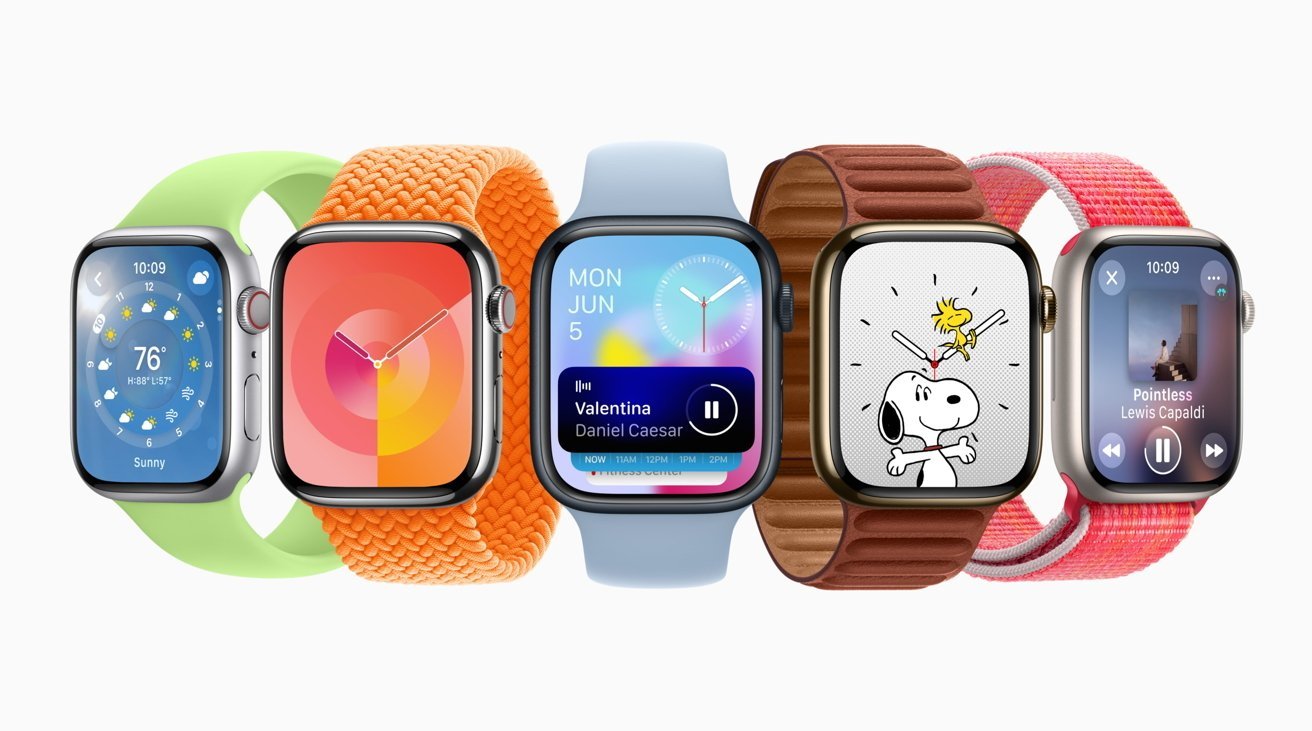Apple isn’t intending to allow third-party watch faces to be offered in watchOS anytime soon, an interview with Apple executives indicates.
Apple introduced its milestone watchOS 10 at WWDC on June 5, showcasing many of the features arriving on the Apple Watch in the fall update. In an interview about the wearable device’s operating system, Apple VPs Kevin Lynch and Deidre Caldbeck discussed some of the changes on the way.
Speaking to TagesAngzeiger on Monday, the Apple Watch chiefs touched upon the repurposing of the Digital Crown button press to open up Control Center instead of the app switcher. This was apparently implemented based on feedback from users.
It was reckoned by the VPs that the change to the Digital Crown makes things more logical to access, and makes it easier to get to Control Center with a single press at any time. A double-press brings up the app switcher instead.
User feedback also informed the creation of the new widget system.
According to Caldbeck, users wanted to get access to data quickly, and without the difficulty of using Glances. The new system is “really really easy and intuitive. We’re extremely optimistic about that.”
No third-party faces
As part of the interview, the pair were asked about the inability to use third-party watch faces. The response was one insisting that it was to maintain stability.
Lynch explained that, as the watch face is effectively the home screen of the Apple Watch, there was a need for it to be consistent and stable.
Caldbeck told the report that users wouldn’t “have o worry about the watch face still working when there’s a major watchOS update. We’ll take care of that.” It’s proposed that Apple wouldn’t be able to ensure the third-party faces work if other operating system elements change.
However, Caldbeck also believes that users already have a lot of freedom to change the existing watch face collection, and that they can also add complications supplied by third-party apps.
The removal of Force Touch
Later in the interview, Lynch brings up the thought process behind the creation and ejection of Force Touch, which was an early Apple Watch feature.
Due to screen size limitations, Apple wanted to have a way to add rarely-used features that don’t take up the scarce display space. “We came up with the idea that you can press harder to access additional functions,” Lynch advised.
However, in solving one problem, it created another. “You didn’t see where to call more functions with it, and you had to know exactly what you were doing,” he offers.
“Now that the screens are significantly larger, we have a lot more ways to display information and additional features,” the VP concludes.
This story originally appeared on Appleinsider

